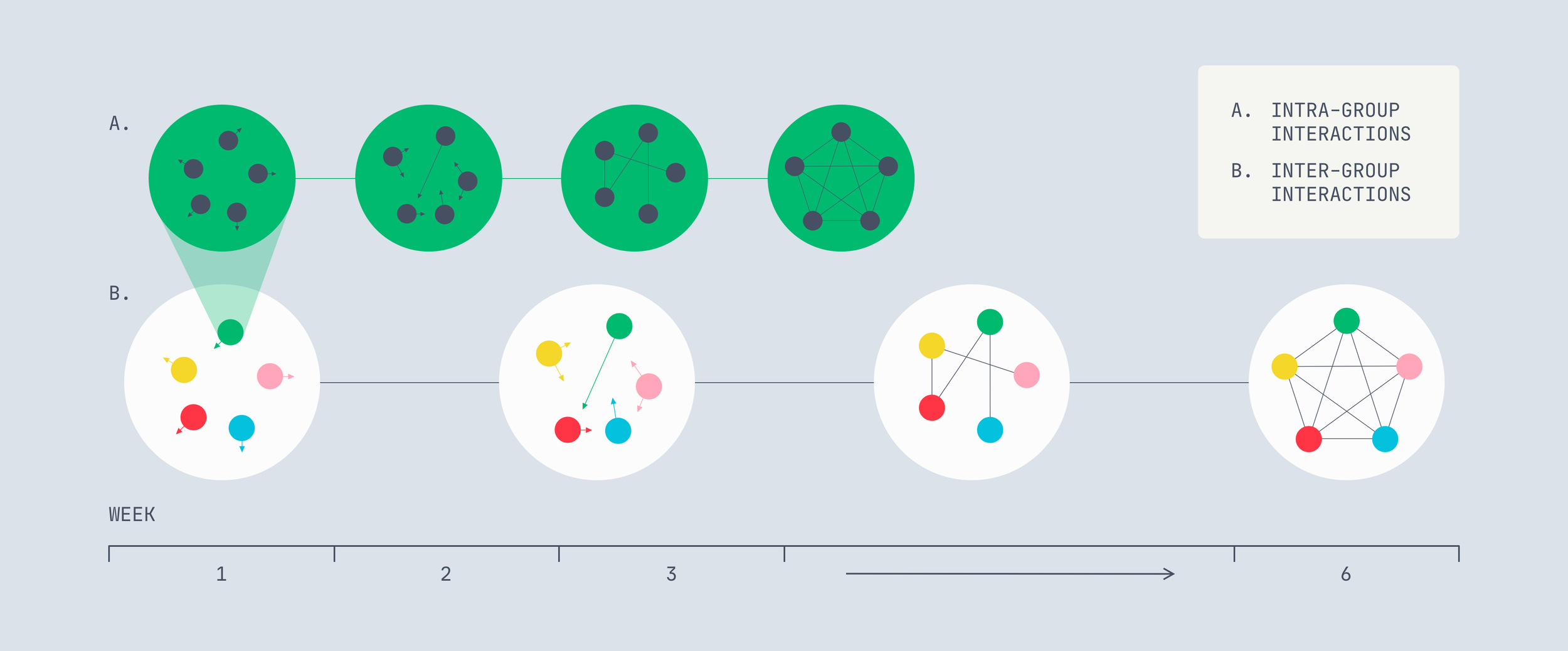
Leadership Academy, 2021
Elevating Outcomes for a Cohort Based Course
CONTEXT
Dr. Thanawala having spent 39 years in the technology sector has firsthand experience observing how few women of colour were in leadership positions. In 2020, she decided to work on changing this. In partnership with the faculty members at the University of Massachusetts and Harvard Kennedy School - The Leadership Academy was born. Rati piloted her first program with the support of a $20,000 grant from Pivotal Ventures.
In 2021, armed with insights from the pilot’s experience, Rati approached us as she looked to elevate the learner and trainer experience for her teaching track.
KEY QUESTIONS
1.
How could group work in virtual learning be leveraged to improve learner engagement namely learner sense of belonging and content retention?
2.
In what ways could the curriculum be reoriented to create more space for real-world application of class concepts?
3.
What was the best way to give personalised feedback given a small teaching team at hand?
APPROACH
Coming in from a corporate background to the academic space, Rati’s curriculum had a sharp real-world focus in the DNA of the program. Our approach was to not come up with more assignments and activities but rather take what we knew was working well to the next level.
Examining the final assignment for the class, we identified appropriate breakpoints to divide the assignment into smaller milestones through the program.
For the final submission, we recommended and implemented shifting the modality of the task from a written to an oral assignment to make it more authentic.
To ensure that the teacher workload was kept in check, we created a rubric that the team could use to onboard more assignment evaluators. The rubric was designed to be easy to understand with minimal onboarding time required as well as had to capture the complexity of the task presented to the learners.
Increased Scaffolding by Division of Final Assignment into Smaller Deliverables
Increased real-world application of concepts by modifying the capstone modality
Online learning can be isolating even in cohort-based courses.
To mitigate this, we introduced the use of smaller groups within the larger group. However, group work does not end with placing students together in a breakout group. It was important to think deeply about the right size of the groups to balance meaningful connections with the risks of group work such as student drop-out and conflict among learners. To balance the risk of homogenous thought throughout the course, intentional mixing up of the groups was scheduled into the program to create the right balance of a sense of belonging and the opportunity to meet new people.
To make this operational, we integrated this within the curriculum as well as leveraged the class slack group that had been created for enrollment and transformed it into a classroom discussion board to take forward the learning.
Intentional grouping to increase sense of belonging and learner engagement during breakouts as well as on the class slack channel
IMPACT
In 2022, the team doubled the size of the virtual program reaching more learners nationally across the United States as well as secured more funding.



